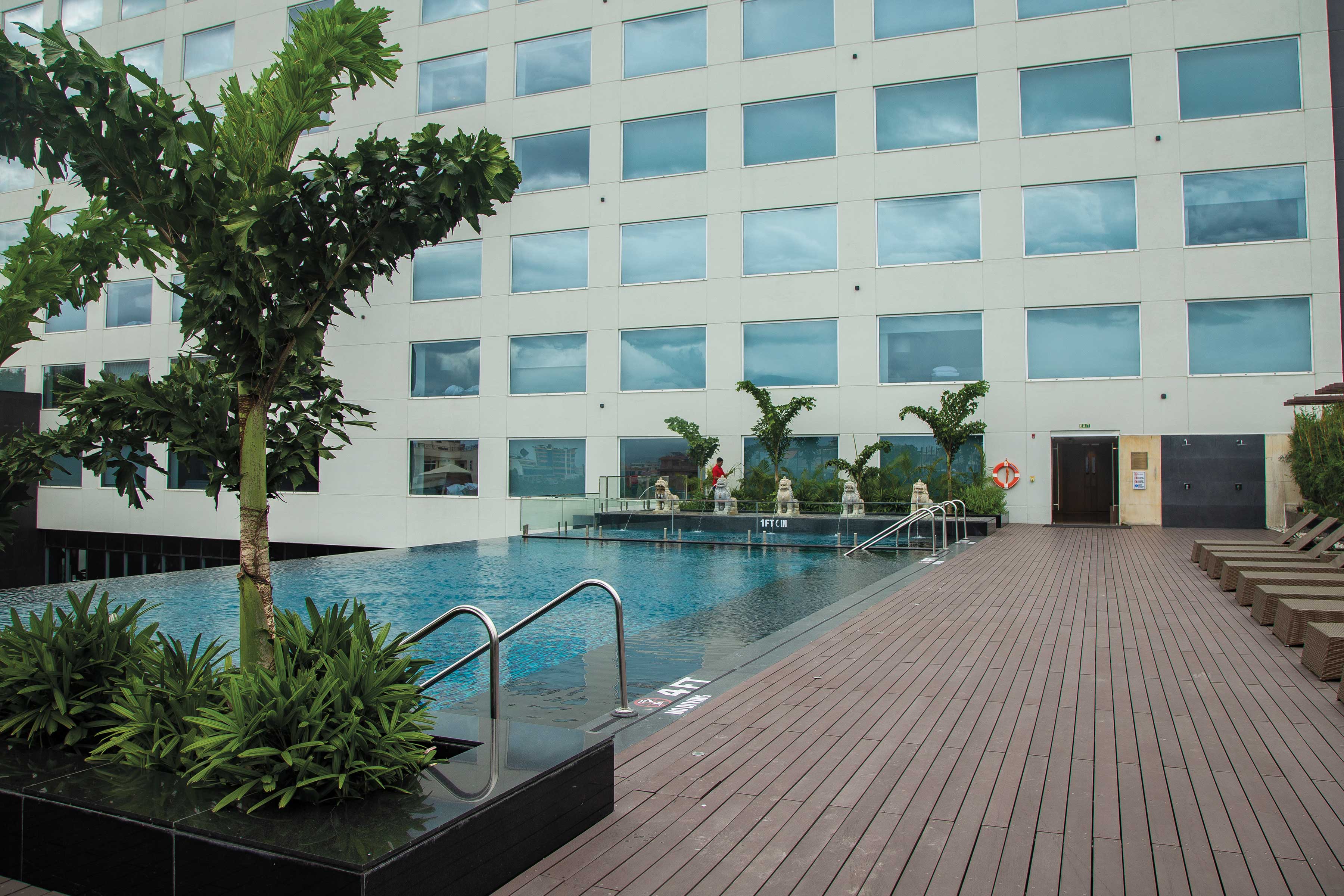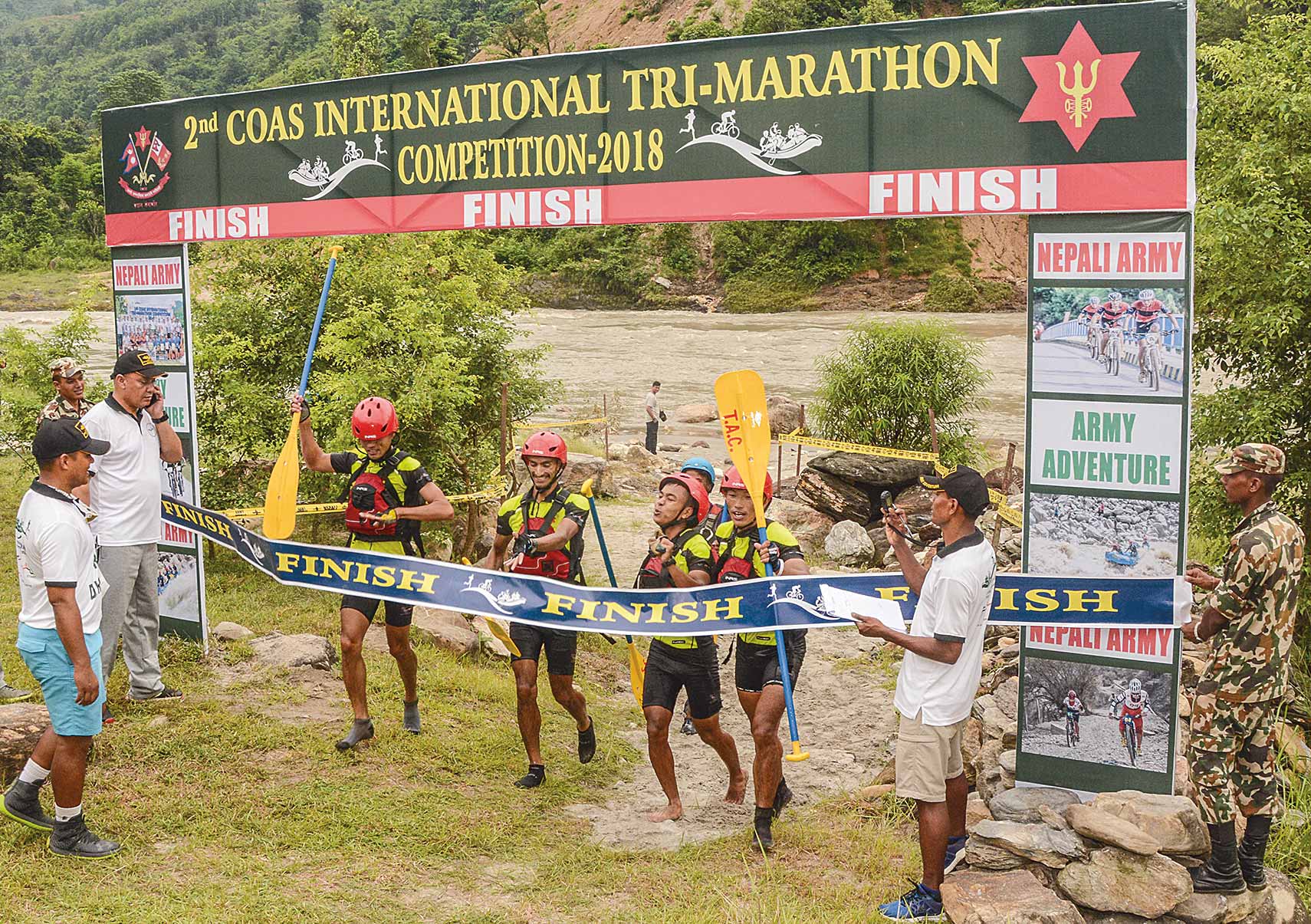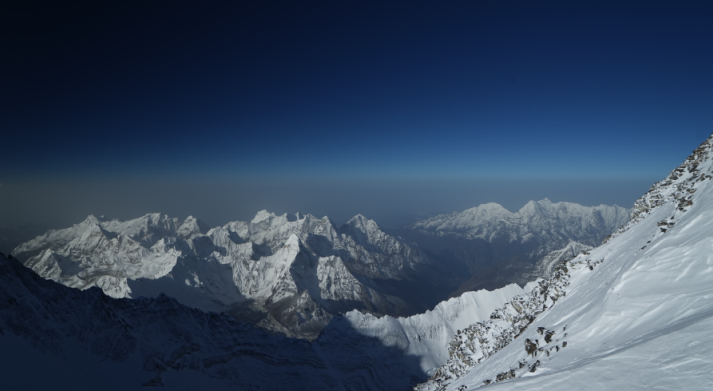For national park employees, especially those lower in its hierarchy, fear is a part of their job, and overcoming it a responsibility. Wildlife was vulnerable during the years of the civil war, and so were the people working to protect it. Despite the dangers, most of the people working in national parks were in their elements. “We did not let the work of conservation slacken even during the years of insurgency,” says Bishnu Prasad Thapaliya, a Ranger at the Department of National Parks and Wildlife Conservation (DNPWC). In 2002, when Thapaliya was a Ranger in Makalu Barun National Park, a group of Maoist fighters arrived at his post, and demanded that accommodation be made available for a night. The Maoists surrounded the building, posted sentries at different places, and ordered Thapaliya to remain in his room. The Maoists left after holding Thapaliya and his staff hostage for over 22 hours.

But the incident didn’t deter Thapaliya, and three years later, in his next posting in Chitwan National Park, he was once again fighting his daily battles against poachers and thieves. One of Thapaliya’s regular tasks was going on patrols in the forests with soldiers. The civil war had intensified, and working with the army had become a hazard. Something as routine as patrolling was a risk; there had been numerous incidents where park officials and army personnel had been ambushed and killed during patrols. Even during such times Thapaliya kept up the patrols, day and night.
The modus operandi of patrols adds to the risk. Night patrols have to be carried out without the aid of light to make them more effective. Although a patrol always consists of armed soldiers, it is vulnerable to attack, and during an attack it is the park officials that are more likely to be harmed. The National Park and Wildlife Conservation Act of 1973 has given national park employees the authority to shoot someone in a life-threatening situation, but they can only shoot below the knee and only officials of the rank of Ranger and above have that power. The government, however, doesn’t issue firearms to park employees.
For workers of national parks, rest, comfort, and holidays are elusive. “There is no Dashain for us,” says Thapaliya. He doesn’t lament the fact, and says sacrifice and suffering are part of his job. “Our job is not a nine-to-five one; we have to work at any hour, and for any possible number of hours. Walking for days, sleeping in the forests, going without food for over 12 hours—these situations are common in our line of work.” he says. Protecting national parks creates emotional stress as well. “Socially we are isolated,” says Thapaliya. Sometimes work requires park employees to stay away in remote places for months without seeing their family. At other times, the elements keep them away. “In Chitwan National Park, during monsoons, we sometimes cannot step outside our posts because the rivers are flooded,” Thapaliya shares. Rupak Maharjan, a Ranger in Chitwan National Park, told me that some years ago a group of park officials had to be rescued by helicopter after flood water engulfed their post.
But not seeing one’s family is better than having them around and not being able to spend time with them, believes Shiv Raj Bhatta, a former Chief Warden, who worked with the DNPWC for over two decades. “Our work is our priority, and it takes a lot of our time. As a result family life suffers. I think it’s wiser not to take your family to stay with you,” he says.
And there is no guarantee that personal sacrifices will yield instant gains. Bhatta says wildlife conservation is an effort made for a better tomorrow. “Conservation is done for the benefit of future generations. So, satisfaction is not felt when we’re working; it’s to be had in retrospect,” says Bhatta. There’s an air of urgency hanging around issues of conservation, and Thapaliya believes that needs to be the case every single day. “There needs to be continuous, long-term effort in the field of wildlife conservation. The carelessness and complacency of a couple of days can come back to haunt us years later,” shares Thapaliya.
It is because of the dedication and sacrifice of people like Thapaliya, Bhatta, and countless others working in our country’s national parks, that wildlife in Nepal can look forward to carefree days and tranquil nights.
Women of the Wilderness
The challenges and hardships involved in the field of wildlife conservation have made it a predominantly male profession. For the few female employees of national parks in Nepal, each day at the job involves blurring the psychological boundaries of gender. Sumjung Lama, who joined Makalu Barun National Park as a game-scout in 2000, admits her job poses more challenges for a woman. “It is not impossible for a woman to work in a national park, but it’s not like teaching in a school, either,” says Sumjung, now a Senior Game-Scout in Shivapuri National Park. During her time in Makalu Barun National Park, she often walked for days to get to her post, sometimes alone. But after ten years of working in national parks, Sumjung has grown used to the demands of her job. “I am an employee of a national park. I have to be prepared for anything. These are the recurring thoughts I have. I can’t excuse myself from duty because I am a woman. I’ve never backed out of any task—not even a patrol with army men at eleven in the night,” says Sumjung. A few weeks ago when fire broke out in different places of Shivapuri National Park she, along with other park officials, worked for entire days to extinguish it. On most of those days her daily ration was a packet of noodles and biscuits.
When Saraswoti Sapkota, a Ranger in Shivapuri National Park, started out as Ranger a decade ago, it wasn’t the physical demands of her job that concerned her. “Since I was the first female Ranger in the DNPWC, people had only seen male Rangers. When I went out to work in the community it was difficult to convince people that I was a ranger,” she says. During her initial years as Ranger in Chitwan National Park Sapkota spent a considerable amount of her time in building credibility, in gaining the confidence of the people, and in overcoming gender bias—things her male counterparts don’t have to worry about, or can achieve in a shorter period of time. “I had to start from scratch, whereas a male Ranger always had things set in place for him. I had to prove myself constantly. The time I could have spent to do useful work was spent in creating an environment to work in,” says Sapkota.
Female park officials have to adapt themselves to the professional environment of wildlife conservation and face the challenges it poses to their personal lives. Sapkota, the mother of a toddler, is constantly trying to maintain a balance between her duties as a Ranger and a mother. “I have to be home in the evening to look after my child, but if a situation arises which requires me to report to the office at night, I have to oblige,” she says. The difficulties of her job, however, do not bother her too much. “I’ve loved challenges since childhood,” she says.
And she doesn’t hesitate to challenge the department’s unequal treatment of it’s employees. “Men working in the administrative section of a park office are issued three sets of uniform, whereas women who patrol the forests day and night are issued only two sets. The contractors supplying shoes make them in accordance to average sizes for men. As a result, women seldom get shoes that fit them. One female Game-Scout I know stuffs socks in her shoes to make them fit better,” she says.
But Sapkota isn’t a person that can be held back by such petty problems. “I broke tradition by joining the DNPWC. I was the first female Ranger in the department’s history. People used to advise me to quit, even those working in the department,” she says. She is especially proud of the fact she has been able to set an example for other women. She says she can use her position to exercise a positive influence on women living in the buffer zone communities.
During her time as Ranger in Chitwan National Park, she encouraged women to participate in conservation activities, to attend community meetings, and to join various user groups. To her delight, women responded positively. Gradually, women started speaking up more during meetings in which they had previously remained silent. Sapkota revels in her role of mentor to women in rural communities. “I think women in the buffer zone communities see me as an example and that makes it easier for me to motivate them. Those women draw confidence from me, and in turn give me an extra incentive to work,” she says.
According to Sumjung Lama, the women employees of a national park can act as deterrents to unpleasant events. Alluding to the recent case of the alleged murder of three women by soldiers in Bardiya National Park, she states that the presence of a woman in a patrol reduces the chances of the men misbehaving. She says that since petty violations of national park rules such as collection of wood and fodder are usually committed by women, female park officials like her can help in not only bringing the offenders to justice, but in ensuring that their rights are not violated.
The women employed in national parks have challenged traditions and overcome psychological boundaries. They make personal sacrifices on a daily basis so that wildlife has a better tomorrow. I asked Sumjung what her favorite animal was. She told me it was the snow leopard. I asked why. “I find its ability to live in harsh conditions remarkable,” she replied. To me, the stoic manner in which Sumjung, Sapkota, and all the women working in the national parks of Nepal face the challenges of their profession, is remarkable.
Yeti Airlines, a domestic airline network, is based in Nepal and operates accross 29 destinations.Without the support from the airline this story would not have been possible.
For national park employees, especially those lower in its hierarchy, fear is a part of their job, and overcoming it a responsibility.











